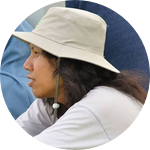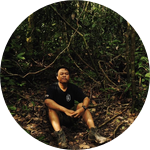About This Project
At least 5 Changeable hawk-eagles (CHE) come to rehabilitation centre annually. Despite this, the annual release rate is low due to lacking of information of its release success. GPS logger is an excellent but expensive monitoring tool that most conservationist from Indonesia cannot afford. We propose to design an affordable GPS data logger that costs less than US$500 to increase effectiveness in measuring the success of CHE release and to foster more raptor ecology research in Indonesia.
Ask the Scientists
Join The DiscussionWhat is the context of this research?
GPS data logger is an active wild animal esp. bird post-release monitoring tool.It is popular because it can record the movement and give information about the animals' survival and ecological features in the wild. However, current GPS data logger costs up to $2000 each, which is too expensive for researcher and conservationist in developing countries like Indonesia. Due to the expensive and unrealistic price, so far we can only apply the passive post-release monitoring method for bird using wing-marker that is observed by several bird-watchers deployed in several monitoring points. Such a method is labour extensive, yet producing an inaccurate result. This project enables an effective, easier way to measure the success of raptor rehabilitation and release programs.
What is the significance of this project?
There is no wildlife conservationist in Southeast Asia, specifically Indonesia, ever try to design affordable GPS data loggers. Moreover, eagles are the most often smuggled raptor species in Indonesia, thus many of them are live, cared in rehabilitation facilities, queuing to be rehabilitated then released back to the wild. This project will provide opportunity to bring the active yet affordable post-release monitoring method into reality, hence increasing the effectiveness and accuracy in measuring the success of rehabilitation and reintroduction programs of raptor in general and eagle specifically.
What are the goals of the project?
Our goal is to design the GPS data loggers with affordable and realistic price (less than US$500) for researcher and conservationist specifically work for bird rehabilitation and release with the requirements: weight less than 5% of the object, rechargeable battery, able to transmit the data from ground station using satelite signal from a certain distance using GPRS. In practice, the device will transmit the coordinates as texts and send them via SMS to the receiver.
We will initially test the device to Changeable hawk-eagles, the medium-size eagle weighs approximately 1-2 kg. If the device works well, we will continue to apply the device to other medium and big-size raptors like Crested Serpent eagles and Sea eagles that are also commonly traded and rehabilitated here in Indonesia.
Budget
Most of the items listed above are difficult to find here in Indonesia, so we need to import from abroad. Although the standard components are available in our home country, we still need to import some from abroad to enable some adjustments required to attain the suitable weight and dimension of the device for eagle.
There are two trials to test the device:
a. in-house test (7-day): the device being tested in the rehabilitation cage of eagles, before release. This is to ensure the device works well when attached on the eagles' body, to ensure no physical or welfare issues occured in the eagles.
b. field test (2-week): the device being tested when eagles are ready to fly free in the wild. The purpose of this test to observe the device's responses towards the height, canopy density, and steep terrains passed by the eagles.
More components might be bought during trial and error investigation of each step in the development process.
Endorsed by
 Project Timeline
Project Timeline
This project will need approximately 8 months to finish. We will start to design in February 2021 and finish all steps in October 2021. Overall the project is divided into 3 big steps: engineering, testing, evaluation. Engineering step will spend 3 months and involves design, programming, and assembly. Testing will need approximately 4 months and involves prototype test, in-house test, and field test. Data collection and evaluation will be conducted after the 2 major steps were done.
Jan 12, 2021
Project Launched
Feb 01, 2021
Engineering the device
May 01, 2021
Prototype test (in-room test, design evaluation, engineering modification when needed)
Jul 01, 2021
In-house test (device attached to the eagles' body, observation in eagles' rehabilitation cage)
Aug 16, 2021
Field-test (device attached to eagles' body before release, observation in the field/release site)
Meet the Team
Team Bio
We are a multi-disciplinary team of early-career scientist, engineer and conservationist who are equipped with skills to integrate the multiple approach of knowledge for conservation of wildlife. We are very motivated, passionate to bring the new technology for better species conservation effort in Indonesia.
Irhamna Putri Rahmawati
Irhamna Putri is a wildlife veterinarian, rehabilitator, and conservationist who have various experiences in dealing with rescued and confiscated protected wildlife. She was a conservation manager of Wildlife Rescue Centre Jogja and now she serves as a secretary as well as supervisor for conservation program at the parent organization of Wildlife Rescue Centre Jogja namely Yogyakarta Nature Conservation Foundation.
Irna, as she usually called, has a Master's in Global Wildlife Health and Conservation from University of Bristol, UK and Bachelor's in Veterinary from Universitas adjah Mada, Indonesia. She has authored several papers about veterinary part of raptor. Given the previous position as a manager, she had managed to organize many raptor release programs in the past.
Faizal Arifurrahman
Faizal Arifurrahman is currently a PhD student at Rice University. Before pursuing PhD, he is a research scientist at Institut Teknologi Bandung (ITB) in Indonesia to date. He earned a Master of Science in Military Vehicle Technology from Cranfield University, the United Kingdom in 2017.
During his work, his research focus was been in the field of fracture mechanics on the blast loading and crash impact phenomenon. Due to his thesis and research works, he found that the complexity and the pattern of lightweight configuration have stunned his view of this nature. In spare time, his interest in nature also clinging to his mind about how to at least contribute to saving our environment/earth.
Andreas Bandang Hardian
Andreas Bandang Hardian is currently a wildlife researcher at Universitas Brawijaya, Indonesia. He has Master's in Veterinary Science from the University of Queensland, Australia. His main interest towards wildlife led him to consistenly conduct researches about raptors. Beside his veterinary-related expertise, he also has experience with the application of GPS technology for raptor release program, together with Irna.
Reza Dwi Kurniawan
Reza Kurniawan is an antropologist who has abundant experience working in wildlife conservation. He was a manager of orangutan rehabilitation centre in East Borneo, worked at the frontline to save orangutan and their habitat. He is currently a conservation manager at Wildlife Rescue Centre Jogja and takes care more than a hundred of protected wildlife.
Additional Information
In short we plan to design a GPS logger with the size and dimension fit to the body of medium-size of eagle (approx. 30 gram). The GPS data logger will be designed for GPRS signal. The main purpose of this project is to achieve an affordable and reliable GPS logger.
The part of GPS logger itself are divided into three major parts to receive the GPS signal position and transmit the data to the ground station/base or transmitting location, which is the decided phone number. The hardware consists of microcontroller, GSM/GPRS Module or wireless signal module, and GPS module. The weight of the whole parts is very important in this engineering process, as we aim to design the device as light as possible, so it will not pose a harm to the eagle when wearing it. In addition, choosing the right spec of batery is important too. The longer the power lasts, the longer the monitoring time, the better the result will be.
The in-house and field testing will give clue about the reliability of signal receiving and transmitting with sufficient and available signal on the field. During the in-house and field testing, the GPS data logger will be attached on the eagles' back using ribbon or glue. When tested in-house, we will ensure that the device will not pose any harm to the eagle, so eagles' response and behaviour toward the deice will be observed. The object (eagle) location will be recorded in time interval and the logger data from eagle will be received on the base at every certain/set time. Any evaluation will be taken into account to better modify the device.
Project Backers
- 13Backers
- 7%Funded
- $315Total Donations
- $24.23Average Donation





